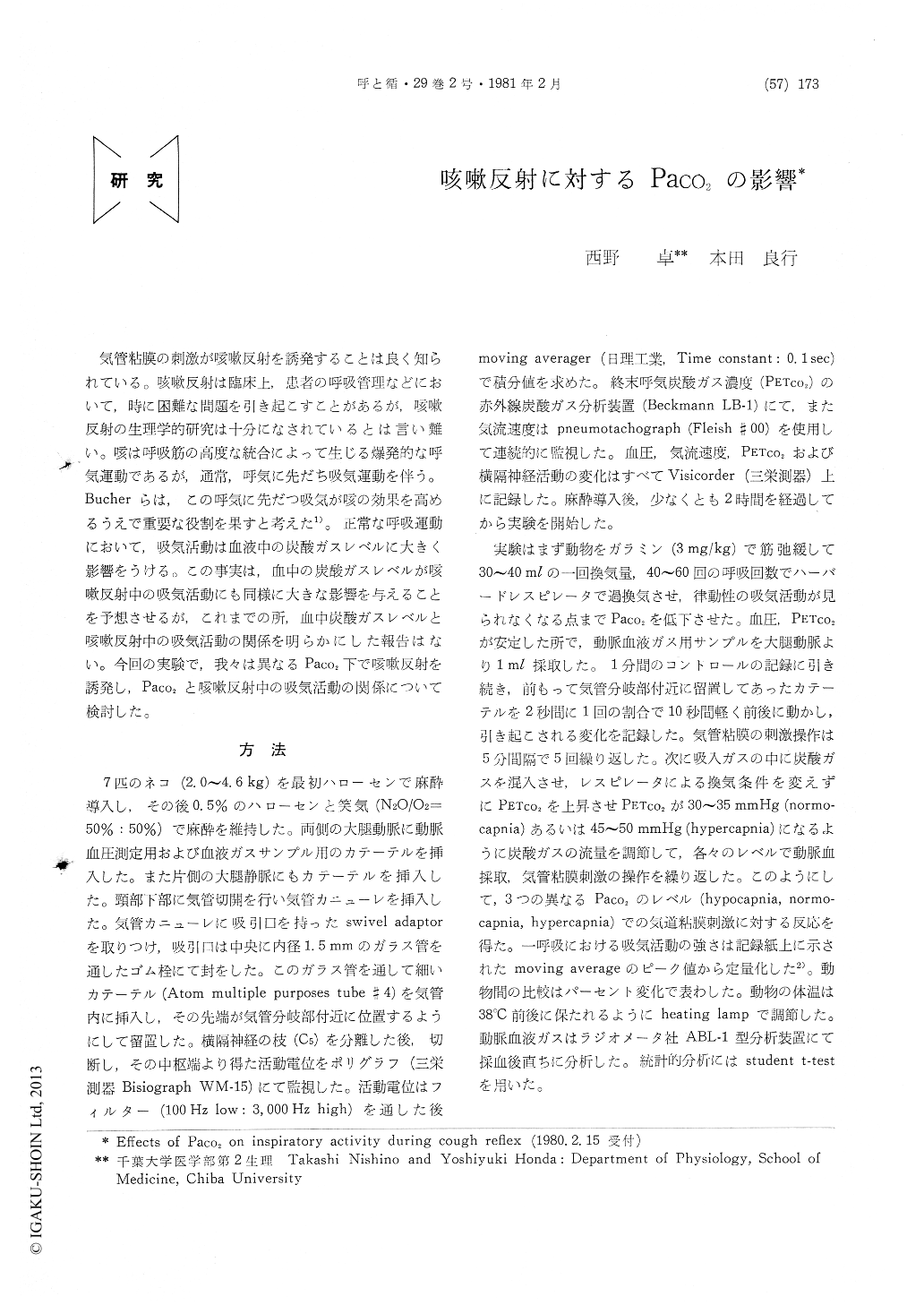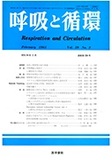Japanese
English
- 有料閲覧
- Abstract 文献概要
- 1ページ目 Look Inside
気管粘膜の刺激が咳嗽反射を誘発することは良く知られている。咳嗽反射は臨床上,患者の呼吸管理などにおいて,時に困難な問題を引き起こすことがあるが,咳噺反射の生理学的研究は十分になされているとは言い難い。咳は呼吸筋の高度な統合によって生じる爆発的な呼気運動であるが,通常,呼気に先だち吸気運動を伴う。Bucherらは,この呼気に先だつ吸気が咳の効果を高めるうえで重要な役割を果すと考えた1)。正常な呼吸運動において,吸気活動は血液中の炭酸ガスレベルに大きく影響をうける。この事実は,血中の炭酸ガスレベルが咳嗽反射中の吸気活動にも同様に大きな影響を与えることを予想させるが,これまでの所,血中炭酸ガスレベルと咳嗽反射中の吸気活動の関係を明らかにした報告はない。今回の実験で,我々は異なるPaCO2下で咳噺反射を誘発し,PaCO2と咳嗽反射中の吸気活動の関係について検討した。
To assess the relationship of the inspiratory activity during cough reflex to PaCO2 tracheal mucosa was irritated mechanically to elicit cough reflex and the intensity of the inspiratory activity was evaluated from the integrated phrenic nerve activity at three different PaCO2 levels, namely, hypocapnia, normocapnia and hypercapnia. At any level of PaCO2 tracheal irritation produced non-rythmic vigorous inspiratory activity. Max-imal inspiratory activity was not influenced by Paco2 level under all the conditions suggesting that there is a PaCO2-indepent maximal point of the intensity attained by a tidal inspiratory ac-tivity. However, total inspiratory activity during tracheal stimulation was increased as the level of PaCO2 increased. After-effect of the stimulation was significantly longer in normocapnia than in hypocapnia and hypercapnia. These results sug-gest that the intensity of cough reflex and its in-terference to the rythmic respiratory activity are dependent on the central respiratoy state deter-mined by PaCO2.

Copyright © 1981, Igaku-Shoin Ltd. All rights reserved.


